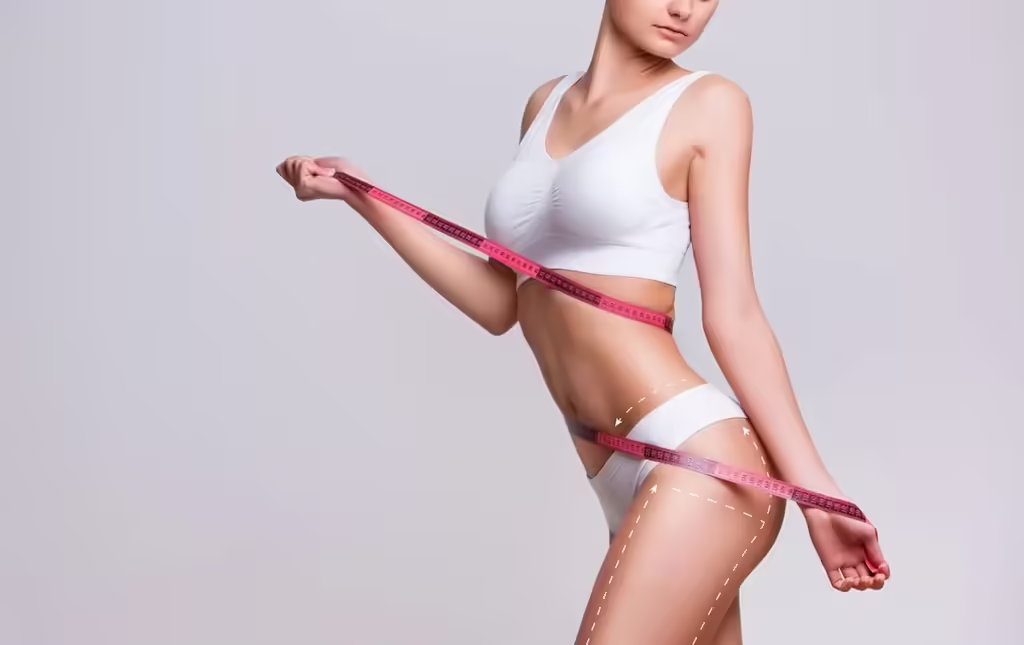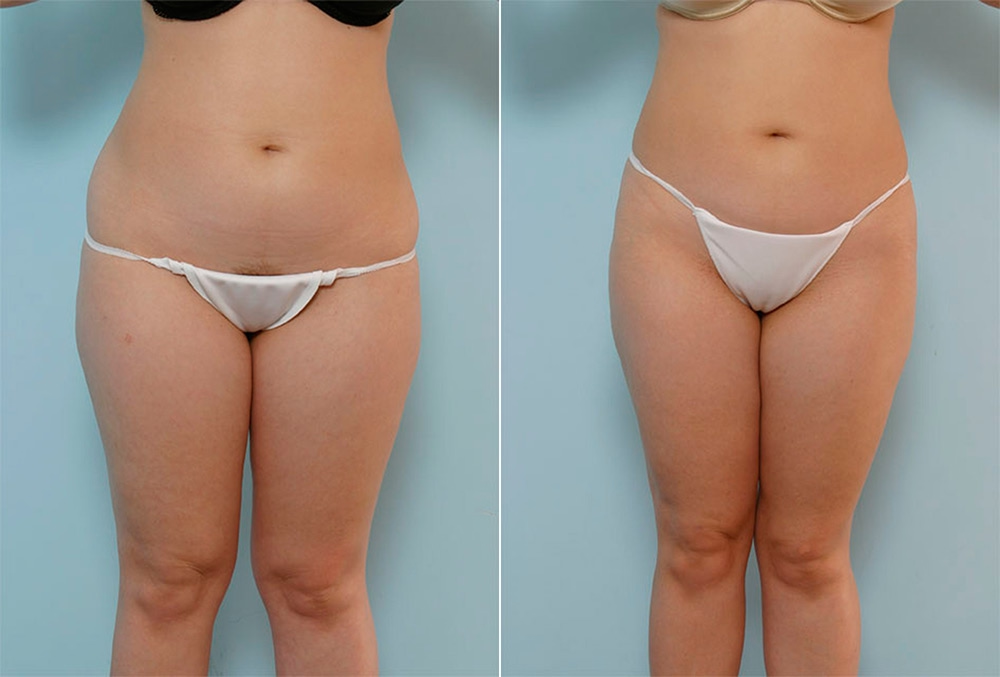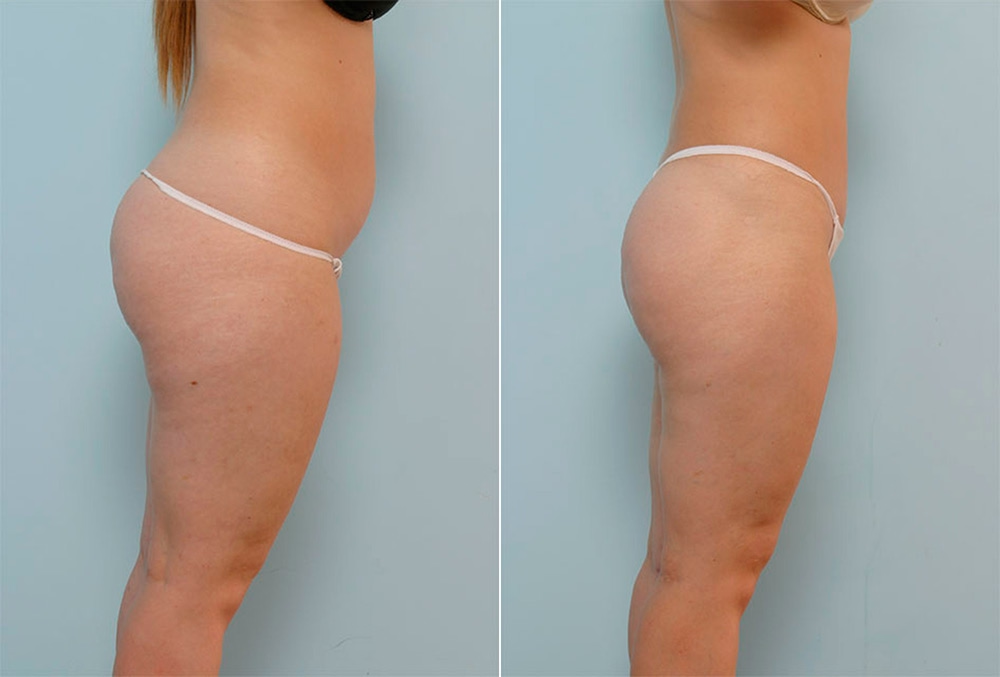
Liposuction immediately removes unwanted fat from your body through a series of incisions using a cannula, but liposuction results aren’t necessarily immediately visible in areas such as the abdomen. A bit of patience is needed after your liposuction surgery, as factors like swelling, bruising, and scars might affect visibility in the treatment area. Your body needs time to heal from the liposuction procedure, and the recovery process, including healing, will play a significant role in the final look. Knowing what to expect from the procedure and how long it can take before you see results can help ease your mind and determine if it’s the right option for you. It’s important to be aware that results vary among different patients and treatment areas, as well as the ability to accommodate the contours and pockets that form due to the surgery.
What to Expect Right After Liposuction
Although liposuction is less invasive than other surgical procedures, such as breast augmentation (implants), and is popular among both men and women, it is still a type of surgery. That means there will be some recovery and downtime needed afterward, during which you might not be able to do your job as efficiently as normal. During this time, you need to adapt your lifestyle and follow the surgeon’s instructions as part of your post-operative care, keeping in mind that this will make a difference in achieving the desired results. For example, eating a balanced diet rich in protein and nourishing foods can support your healing process and help you maintain your new shape after surgery.
The initial recovery after liposuction usually takes about a week. During that time, you’ll want to stay home from work or school and limit your activity. If you have young kids, having someone lend a helping hand and watch them during your recovery is a good idea since caring for them might be harder than usual.
Your surgeon might prescribe pain relievers to help ease any discomfort right after the procedure. You’ll be asked to wear compression garments, which will help speed along your results. The garment holds your skin in place and puts gentle pressure on the treated area so that it eventually diminishes in size.
Swelling is fairly common after any type of surgery, including liposuction and breast implant procedures. Everyone’s body is different, and some people might have more dramatic or noticeable swelling than others, even on their postsurgical incision sites. Here are some tips for managing such postsurgical concerns – it might be that your swelling is sufficient enough after your surgery that it conceals your results for some time. In some cases, people notice a reduction in size in the area treated right after surgery. But thanks to swelling, that initial reduction seems to fade. As soon as the swelling goes down again, you’ll begin to notice results.
Detailed Recovery Timeline Post-Liposuction
Understanding the recovery process after liposuction is crucial for setting realistic expectations and preparing for the journey ahead. Here’s a week-by-week guide to help you navigate the post-operative period:
- Immediately After Surgery: It’s normal to experience swelling and discomfort right after the procedure. Your surgeon will apply compression garments to minimize swelling and support healing.
- First 24 Hours: This period is critical for rest. You may experience soreness and fatigue. Pain medication can be used as prescribed to manage discomfort. It’s essential to stay hydrated and follow all post-operative instructions.
- 48 Hours Post-Op: Continue to rest and limit movement. Swelling may persist, but wearing compression garments will aid in reducing it. Light, gentle walks are encouraged to promote circulation.
- First Week: By the end of the first week, you should notice a decrease in discomfort. Swelling and bruising will start to subside. As per your surgeon’s advice, short walks and light activities can be gradually introduced.
- First Month: Most patients report a significant reduction in swelling and discomfort. You may start to see some of the liposuction results as your body contours begin to emerge. Gentle exercises can be resumed, but avoid strenuous activities.
- Three Months and Beyond: This is when you can expect to see more definitive results. The treated areas should appear more sculpted and contoured. Maintaining a healthy lifestyle is important to preserve and enhance your results.
Remember, individual experiences may vary, and it’s important to maintain regular follow-up appointments with your surgeon to ensure a smooth and safe recovery.
Waiting for Liposuction Results
Generally speaking, it can take up to a full year after surgery before you notice the final liposuction results. How long it actually takes before you see results varies from patient to patient. Some people see a dramatic improvement by three or six months after their procedure, and they might even be able to comfortably wear tighter-fitting clothes between meals. Some people assume that they’ve seen their final results by that point, only to realize after a full year that they’ve seen even more results. But thanks to swelling, that initial reduction seems to fade. As soon as the swelling goes down again, you’ll begin to notice results.


If you aren’t happy with the results of your surgery or think you will need an additional procedure, like lipo or a breast augmentation treatment, it’s usually recommended that you wait at least a year before you decide to have revision surgery.
What to Do to Improve Your Results
Is there anything you can do to improve your results after liposuction or to help results become visible more quickly? The answer is yes, there are a few things you can do, and incorporating rest and a healthy lifestyle, in addition to your surgeon’s advice, plays a key role.
One of the best ways to improve your post-liposuction results is to wear the compression garment as recommended by your surgeon. The garment will help hold everything in place after your liposuction and can help improve the shape of your body, refining your physique. Along with minimizing swelling and discomfort at the incision sites during the course of your recovery, a compression garment can also help to reduce pain associated with anesthesia.
How long you should wear the compression garment depends on how comfortable you feel with it and what your surgeon recommends. Some people only wear their garments for a couple of weeks, while others keep theirs on for about six weeks after surgery, based on their individual goals and the surgeon’s comments.
Although you do want to avoid strenuous exercise for some time after your surgery, it’s essential that you not be entirely sedentary while you recover. Ensuring that you engage in some form of light activity, like taking regular walks, will help you get back to normal more quickly and will help you reduce the risk of blood clots and other surgical complications. Plus, going for walks during your initial recovery will help you get back in the swing of exercising as soon as you’re able. It’s important to maintain a focus on your health throughout the recovery. Usually, it’s recommended that you avoid intense physical exercise for at least four weeks after liposuction.
Expert Insights from Dr. Paul Vitenas on Liposuction Recovery
As one of the leading experts in cosmetic surgery, Dr. Paul Vitenas brings a wealth of knowledge and experience to liposuction.
Dr. Vitenas also highlights the importance of maintaining results, as Liposuction is not a substitute for a healthy lifestyle. He encourages patients to adopt a balanced diet and regular exercise routine to maintain and enhance the results.
With over 30 years of experience in cosmetic surgery, Dr. Vitenas’s approach to liposuction is both art and science, ensuring patients receive the highest standard of care and achieve results that enhance their natural beauty.
Maintaining Your Liposuction Results
Although the fat that’s taken away during liposuction is gone for good, the surgery isn’t a permanent weight loss method. The remaining fat cells can expand if you gain weight afterward, undoing the results from the procedure. It’s usually recommended that you stick to a healthy diet and exercise routine after your surgery to help you get the most out of your results. Following these guidelines is something you should take seriously.
Your surgeon can give you specific advice on eating and exercising if you need more guidance. Generally, eating fewer calories, getting regular exercise, and drinking plenty of water will help you enjoy the results of liposuction for many years to come, all while ensuring you achieve your weight-loss dreams.
As you get older, there might come a point when you need additional surgery to keep up your results. While liposuction removes unwanted fat, it doesn’t get rid of excess skin. At some point, certain areas of your body might develop loose and sagging skin. At that point, you might consider a procedure such as a tummy tuck or body lift to help improve the tone of your skin and to help restore your shape. For some people, combining liposuction with a tummy tuck or other types of lift at the start is the option that allows them to get the best results.
Working with a board-certified plastic surgeon with ample experience performing liposuction is a must if you want to get the best results possible from your surgery. In Houston, Texas, that surgeon is Dr. Paul Vitenas. To learn more about liposuction and to see if it’s the right option for you, call 281-484-0088 to schedule a consultation with Dr. Vitenas today.
Liposuction Results FAQs
While individual experiences vary, most patients notice changes within a few weeks post-surgery. However, it can take up to three to six months to see the full results as your body heals and swelling subsides.
Recovery typically involves some swelling and discomfort, which gradually decrease over time. For optimal healing, wearing compression garments as your surgeon advises and following all post-operative instructions is important.
Liposuction is not a weight loss procedure. It’s designed to remove localized fat deposits and contour specific body areas. Post-surgery, maintaining a healthy lifestyle is crucial for sustaining results.
The fat cells removed during liposuction will not regenerate. However, gaining weight can cause remaining fat cells to enlarge, potentially altering the results. A balanced diet and regular exercise are key to maintaining your new shape.
As with any surgical procedure, liposuction carries some risks, such as infection, bleeding, or uneven contours. Discussing these risks with your surgeon and following their guidance can help minimize potential complications.
The duration for wearing compression garments varies, but it’s typically recommended for several weeks post-surgery. Your surgeon will provide specific guidance based on your individual case.
Most patients can return to light activities within a few days and resume normal routines within a few weeks. However, avoiding strenuous activities is important until your surgeon gives you the go-ahead.
